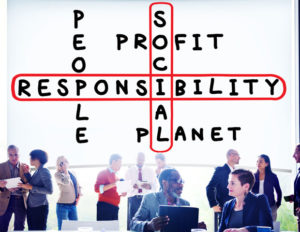There were more than 170,000 people at Dreamforce a couple of weeks ago, and many more watching from afar. Also, there were well over 2,000 sessions (full disclosure, I led a panel discussion on employee engagement). Numerous announcements sprang from the big Salesforce event.
Some announcements and sessions, like the Tim Cook fireside chat, stand out. Of the top six, I reckon that five were more about integration and working across vendor boundaries than CRM. Given where we are in the evolution of the industry, that’s a good thing.
To me all of this signals a new disruption forming that will change IT as fundamentally as Salesforce’s arrival on the scene did 20 years ago. Back then almost everyone thought that CRM was the significant innovation, but it was really the cloud computing and subscription software paradigms that were the big deal.
Most conventional vendors dismissed the cloud as a toy. Most cloud vendors thought of it only as an alternative delivery paradigm. They were wrong, of course. Cloud computing led a huge standardization and commoditization wave that’s still being felt. A wave forming now will take that initial wave much further.
Here’s how I see the announcements.
Tableau’s Place
Salesforce only recently completed the acquisition of Tableau, an analytics and data visualization provider, for US$15.7 billion. Analytics and visualization are critical for any company undergoing a digital transformation, because they enable it to make sense of all the data it’s been collecting and then to act on the findings.
Tableau does everything it can to keep the user above the fray. The demos that I saw were really gorgeous, combining multiple data sources and the ability to pivot around them with a few clicks and not a line of code in sight. This is largely in keeping with Salesforce’s approach of no-code, low-code, and code-if-you-really-need-to app development.
It’s also a form of commoditization that democratizes technology by putting it into the hands of business users, obviating the need for experts.
With Tableau there is no visible gap between Salesforce and non-Salesforce data, and that’s the point. Tableau retains its identity and brand post-merger, and much of its customer base is non-Salesforce. That’s important because I think Salesforce is aiming at a broader audience.
Einstein Voice Assistant
There is an old maxim often attributed to the early 20th century Boston politician, Martin Lomasney: “Never write if you can speak; never speak if you can nod; never nod if you can wink.”
Modern political operatives also might wish to add, “Never put it in social media or email,” for good measure, but I digress. Lomasney was speaking of potentially incriminating nefarious political activity. Salesforce seems to be recapitulating the idea in much of its doings, but only for good.
“Never code when you can click” might be the new maxim — or “when you can drag and drop,” for that matter. Another might be “Never engage in keyboard activities if you can speak.”
That seems to be the genesis of Einstein Voice, a feature built into Salesforce CRM that enables users to speak to their apps and perhaps avoid carpel tunnel syndrome. Einstein Voice also enables users to iterate more rapidly on requests if one should fail.
In this, Einstein Voice is not dissimilar to products from Oracle, Zoho and many other vendors today. Where Salesforce shines is in the completeness of its offering — from the fundamental existence of the product to the training it offers through Trailhead.
There is something of a big brother aspect to products like Einstein Call Coaching (GA winter 2020), which provides the sales coaching that managers don’t have time for today. However, it might be easier to take suggestions from a machine than from a boss, so maybe this is a good thing.
There’s also Einstein Voice Assistant and Einstein Voice Skills (beta spring 2020), which will give admins the ability to create custom versions of the voice assistant for every user.
Finally, Service Cloud Voice (GA summer 2020) will enable Einstein to read keywords from call transcripts and serve knowledge articles and next-best actions for agents.
Taken together, these innovations enable more automation throughout many CRM processes, which will free more people to do higher value-added work.
Partnership With Apple
Three of the six major announcements stemming from Dreamforce were about partnerships with other vendors. News of Microsoft and AWS partnerships dribbled out before the conference, and some activity with Apple also was indicated. Salesforce seemed to have put the most wood behind the Apple arrow by including a fireside chat with Tim Cook, Apple’s CEO.
The partnership includes tighter integration of the companies’ products, most notably reimagining the Salesforce Mobile App in iOS and the new Salesforce Mobile SDK optimized for Swift and iOS 13.
There’s also Trailhead GO with 700 modules exclusive to iOS and iPadOS. So it appears that Salesforce is trying to leapfrog its business apps’ usability to the level of consumer apps.
If you’re keeping score, that’s another example of enhancing usability and inevitably commoditizing business functions to improve business performance.
AWS’ Role
Some time ago, Salesforce and Amazon announced a partnership that would make AWS a hosting platform for future specialized Salesforce instances. The newest announcement takes this a step further.
As part of its Service Cloud Voice offering, Salesforce will offer the Amazon Connect contact center service. This will include Einstein Voice interoperability with Amazon Alexa, as well as other voice assistants in the future.
Collaboration With Microsoft
Salesforce and Microsoft last month announced joint efforts on several fronts, including naming Microsoft Azure as public cloud provider for the Salesforce Marketing Cloud, and new integrations between Microsoft Teams and the Salesforce Sales and Service Clouds.
I could be wrong, but I thought Marketing Cloud components — once Exact Target and Pardot — were situated on Azure to begin with. If so, the announcement is more about business relations than technology.
Regardless, Microsoft is an increasing part of Salesforce’s life, as it should be given the huge customer base the companies share. These announcements provide further evidence of a mass market approach — not only to CRM but also to IT generally. I’m looking for more out of this relationship, and quite possibly Microsoft will turn into the glue that holds together a future IT utility.
Customer 360 Truth
When it was announced shortly before Dreamforce, “Customer 360 Truth” seemed like an awkward name. It still does. The intent was to position Salesforce as the single source of information for its customers — the sole source of truth.
In a world of competing data sources and analytics engines, that promise has currency. However, developing customer trust was also an important Dreamforce theme, and calling something “truth” is like saying “you can trust me,” which is a technique of scoundrels. That’s not what Salesforce is about.
To get customer trust, one first has to put some skin in the game but that seemed lacking. In this instance, building trust requires a vendor to declare what it is honor-bound to do for customers, and then to live up to the declaration. That’s been the way it has worked for ages, with promises like “double your money back” in a simpler time.
Declarations like that seem rare in the modern world. Instead of putting their honor behind their policies, vendors seem happy to highlight their wonderful technology, strongly implying that it will never fail. In response to that I have two words: Cambridge Analytica.
At the time of the Customer 360 Truth announcement, Salesforce pushed a related idea — CIM, or customer information model — along with its partners, The Linux Foundation’s Joint Development Foundation, Genesys and AWS.
They positioned CIM as a way to standardize data interoperability across cloud applications, but I think there’s more here. First, it’s an information model and not a data model, and there’s a difference. Apps have data models, but integrations of multiple apps need information models, because the several applications in an integration need to trade information, and that’s different.
Whatever you want to call it, the edifice of technologies and partnerships Salesforce has constructed increasingly is coming to dominate information exchange — the same way that SQL dominates data storage. The parallel is important, because it signals further consolidation of the industry into a utility.
My Two Bits
I started this marathon stating that we’re witnessing the formation of a new disruption that will change IT as fundamentally as Salesforce’s arrival on the scene did 20 years ago. Cloud computing and subscriptions were the disruption then, and they fundamentally dissociated enterprises from their IT.
The new disruption appears to be reassembling the components into a new whole. In this case, we’re watching the industry further commoditize, removing labor from practice and simplifying approaches.
This has been going on as long as enterprises have been using computers, but the consolidation we’re now watching doubtless will have some benefits that we are seeking government assistance to provide today.
Most notably, if we’re going to have a grid that supports information sharing and interoperability, we’ll need to create some standards and protocols for reducing or eliminating some of the worst effects of hacking and cyberwarfare.
The private sector now has it within its power to lock out bad actors, preventing them from accessing their life blood: data. In a world where truth and trust are of paramount importance, it’s hard to see how you support these values unless you also ostracize bad actors. We might still be a few years away from locking down cloud IT, but the area where bad guys can operate already is shrinking.
Oracle’s Autonomous Database makes it nearly impossible for bad actors to gain access to sensitive IT farms. Partnerships between the largest IT vendors — like Salesforce, Microsoft and Oracle — are generating increasingly stringent standards and robust systems that span vendor silos.
At some point vendors that don’t get on board, citing First Amendment concerns for the bad guys, will find their access and influence greatly diminished.
All this seems like it’s a long way from Dreamforce, but it’s not. Dreamforce, as usual, showed us a glimpse of the future, when CRM is largely built out. That era will be more about leveraging the sophistication of technologies.
























































